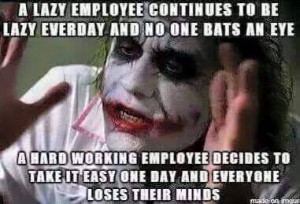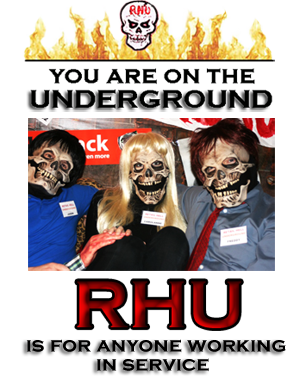The Ten Worst-Paying Jobs in America

It’s easy to forget now, but the original purpose of Labor Day wasn’t to invite your friends over for a cookout, some beers, and one last chance to celebrate the summer. It was to recognize the contributions of American workers, at a time of struggle and unrest .
According to the Department of Labor , the first official celebration took place in New York, in September of 1882. It was the height of the Industrial Revolution—a time when American workers could expect to work twelve hours a day, seven days a week, but still live in poverty. They toiled in mills, factories, and mines without access to basic necessities like sanitary facilities, if they were even allowed to take breaks. Five-year-olds were sent to work to help support their families.
Pay and working conditions are a lot better now, obviously—thanks in no small part to the labor movement and laws, like the minimum wage, that it helped pass. But even the most basic financial security remains elusive for many Americans, as my colleague Danny Vinik noted recently. One reason is that many jobs simply don’t pay very well—and lots of people have those jobs. According to the Bureau of Labor Statistics, more than 22 percent of Americans hold one of the lowest paying jobs that the agency categorizes.
What are these jobs? We decided to take a look, by going through BLS statistics and compiling a set of the ten worst paying jobs in America. We adapted the official numbers in one important way: Going strictly by BLS categories, nine of the ten worst paying jobs are different occupations within the food services industry. We decided to group the jobs by industry—in other words, to lump all the food service industry jobs together, and then provide a salary range that includes the median wage for each one. We did the same for a three other industries: agriculture, recreation, and sales. The chart just above has all the information.
Not everybody in these jobs is struggling. Sometimes people in low-paying jobs are students, or take them part-time and, while they aren’t making much money, they also aren’t living in poverty. But of the Americans who are getting by on the federal minimum wage, it’s important to note that in 46 out of 50 states, women make up more than half of minimum wage workers. (I have written about this previously, for Forbes , if you want to read more details about the breakdown and its sources.) In the remaining four states, women still make up roughly half of minimum wage workers. This is one reason that 40 percent of households with single mothers as the sole breadwinner were in poverty . This, of course, plays into why the problem of reliable and affordable child care is so urgent. Child care, by the way, is the eleventh worst paid job in America. But that’s another story.
And now, for the full breakdown:
10. Parking Lot Attendants

The popular image of the parking lot attendant is the two guys from “Ferris Bueller’s Day Off,” joyriding around Chicago in a Ferrari they were supposed to watch over carefully. In reality, the job is rarely that much fun. It pays $10.26 an hour, and while some parking lot attendants do work full time, many string together part-time or temporary work for large events or for certain evening and nighttime hours when restaurants offer valet parking. It’s fine as a way to supplement earnings, or help pay for school. But as a living? That’s a problem. The jobs typically don’t provide benefits and, for outdoor lots particularly, the work can be demanding.
Mean hourly wage for parking lot attendants: $10.26
9. Personal Care Aides

Personal care aides make a mean hourly salary of $10.09, and, according to BLS, only half of all personal care aides worked full time in 2012. Yet their work is not just demanding physically. It can take an emotional toll. These men and women are responsible for tasks ranging from feeding a disabled person, to lifting an injured or elderly adult into and out of a wheel chair. The job has a number of occupational hazards , which include a higher rate of injuries and illnesses (usually caught from the client), as well as exposure to potentially violent situations with mentally ill or cognitively impaired clients. Ironically, many personal care aides work in private homes and do not have access to employee benefits, like medical insurance, even though delivering health care is a big part of their jobs.
Mean hourly wage for personal care aides: $10.09
8. Lifeguards

Lifeguards spent hours in the summer sun, and are charged with keeping people safe while they enjoy recreational activities. Unlike park attendants, though, whose responsibility usually ends once a person is harnessed or buckled safely, lifeguards have to be on constant alert so that they can save anyone who appears to be drowning. The job tends to be more whistle blowing than heroic action, though, with occasional yelling of “don’t run,” and “adult swim.” Another job primarily held by teens, it’s unlikely that lifeguards will see a push for higher wages anytime soon, especially because many lifeguards see tanning (aka skin damage) as an important job benefit, not an occupational hazard .
Mean hourly wage for lifeguards and other protective service workers: $10.05
7. Gaming Dealers

The job of a gaming dealer may seem like all play and no work. It’s not. The Bureau of Labor Statistics recognizes it as “physically demanding,” because dealers are expected to stand behind a table for nearly their entire shifts. Casinos frequently allow smoking, which makes second hand smoke from cigarettes, cigars, and pipes an additional—and serious—occupational hazard. On the bright side, casinos typically offer full time work and employee benefits, and jobs are no longer limited to Nevada and New Jersey as they once were.
Mean hourly wage for gaming dealers: $10.04
6. Garment Workers

The garment industry is famous for its history of unsafe conditions. Quite possibly the most famous workplace tragedy in our country’s history was the Triangle Shirtwaist Factory Fire of 1911, in which 146 of 500 employees, mostly young women, died from jumping from the burning building or from being trapped inside it, where emergency exits had been locked to prevent employees from using the bathroom too frequently. Today, such accidents mostly take place in far away places. But American garment workers still work for low wages and in rough conditions—in some cases, because their ranks include undocumented workers who are in no position to challenge employers over workplace standards. In 1996, the Department of Labor estimated that half of the country’s garment contractors were in violation of federal minimum wage or overtime laws. It’s difficult to determine if and how much we’ve improved since then, as statistics are not collected regularly on garment worker conditions.
Mean hourly wage for pressers and other workers in the garment industry: $10.03
5. Cashiers

You might think the worst part of being a cashier is the monotony. Think again. It turns out that cashiers are the victims of robbery and homicide more often than most other workers, according to the Bureau of Labor Statistics’ Occupational Outlook Handbook. Less dire occupational hazards include standing all day long and missing holidays with the family. The holiday season is the busiest time of the year in retail. So what do cashiers make? The mean annual salary is around $9.83, but that factors in retail workers, who typically earn more than grocery store and gas station cashiers. Grocery store and gas station cashiers, combined, make up 42% of the profession and their wages usually start at the federal minimum wage, which is $7.25 an hour.
Mean hourly wage for cashiers: $9.82-9.83
4. Amusement Park and Recreation Attendants

Gone are the days of the old Action Park, site of multiple deaths and lawsuits—where, reportedly , amusement park attendants suffered traumas ranging from being shot point blank with tennis ball cannons to having to test out the park’s infamous Cannonball Loop water slide. But working at an amusement park still has its occupational hazards, like cleaning up after sick park-goers and the threats of sun-sickness and dehydration, since it requires long hours in the summer heat. When you think of attendants, you probably think of teenagers on summer jobs, for whom low wages aren’t such a big deal. But lots of grown-ups work at amusement parks, too—in maintenance, for example, or at resorts that operate year-round. These attract older applicants, who depend on these jobs to feed their families. Low wages for them are no laughing matter.
Mean hourly wage for ticket takers and other amusement park workers: $9.76-10.22
3. Farm Laborers

Farm laborers are some of the lowest paid workers in our country, despite working in what is arguably one of the most essential, and wealthy, industries in our country. A U.S> Department of Agriculture study on Crop Production, published in 2013, estimated that American farmers annually produce close to $143 billion worth of crops and close to $153 billion worth of livestock. But the money goes primarily to the owners, frequently large agriculture companies—who, all too often, take the workers pretty much for granted. One sign of that treatment is safety, or lack thereof, on the farm: A 2013 study from the Center For Progressive Reform found that, based on data from the Bureau of Labor Statistics, on average, more than one farm worker dies in a work-related accident every day. This was found to be seven times higher than the average for all private sector jobs. Philip Martin, a labor economist at the University of California-Davis, estimated that in order to raise farm wages by 40 percent, the average American household would have to pay only $15 more a year for produce—though that still wouldn’t address the safety problems. By the way, work-related accidents aren’t the only hazard farm workers face. Seven chilling incidents of tomato farm slavery involving workers who had been abducted, confined at gunpoint, and suffered starvation wages and pistol whippings have been discovered and prosecuted in Florida since 1997.
Mean hourly wage for agriculture workers: $9.65-10.20
2. Shampooers

Sometimes entry-level positions go to those people who are ambitious enough to deal with low wages and menial work, just for a chance to learn and start working their way up to better-paying jobs. That’s frequently the story with shampooers. Many are aspiring stylists who hope eventually to cut hair. The job has its advantages: Many can work a real 40-hour workweek, and some even earn tips. That said, at a mean hourly salary of $9.09, the job barely provides a living. Many take on the position part time, using the wages to offset the costs of beauty school.
Mean hourly wage for shampooers: $9.09
1. Fast Food Cooks

Fast food cooks have the lowest paying job in America, according to BLS statistics, although most other jobs in the fast food industry don’t pay much better. With a mean hourly salary of $9.07, 40 hours a week should yield close to $18,870, but many fast food cooks work only 25 hours a week. Working every week of the year, without a single day off, these men and women make $11,791 before taxes, which puts them just above the poverty line for a single person with no dependents. But many of them also do not make $9.07. In January, President Obama had a conversation with a man in the fast food industry who has gone on strike four times because he makes only $7.25 an hour. Even if this man works 40 hours every week—again, without taking any time off—he makes $15,080. If he is supporting anyone beside himself, that income puts him below the poverty line .
Mean hourly wage for the food service industry: $9.07-10.18

























Recent Comments